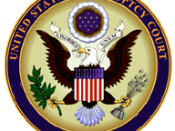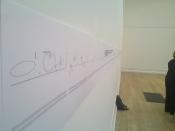SummaryIn University of Phoenix's creating a Bankruptcy Plan simulation the user encounters several bankruptcy situations in which the user must decide which chapter of the Bankruptcy Code to file and implement the appropriate bankruptcy plans. The simulation begins with Cardew Printing, a small limited liability printing business, which has been running at a loss for several years. Cardew Printing is unable to make the agreed upon payments to its creditors and is faced with deciding between chapter 7 and chapter 11 bankruptcy. In 2005, the current year of this simulation, the number of business filings for Chapter 7 was 28,006 and Chapter 11 was 5,923. This is approximately a 5 to 1 ratio of Chapter 7 bankruptcy filings to Chapter 11 bankruptcy filings (U.S. Bankruptcy Courts, 2006).
I choose Chapter 11 for Cardew after looking at key indicators, assets/liabilities, industry, and projected cash flow. Cardew's high net receivables covered 30% of its liabilities and the recent purchase of new high tech printing equipment gives the Cardew the ability to regain a profitable market share.
Chapter 11 bankruptcy requires a plan approved by debtors and creditors to pay a certain amount of the debts and discharging the remainder. During the repayment period the company continues operation under court observation. Standard time frames for Chapter 11 are determined by the court and include: 180 days after petition for debtor to file a plan (18 month maximum), 180 day period for the debtor to gather creditor acceptances (20 month maximum), Confirmation by court period varies on proceedings, and a repayment period of 3-5 years. The repayment plan I choose for Cardew spanned 3 years and paid the creditors in the following priority order: Steinway Commercial bank (repaid in 3 years), outstanding wages and benefits (repaid in 1 year), and Sawyers Printing Supplies (repaid...


